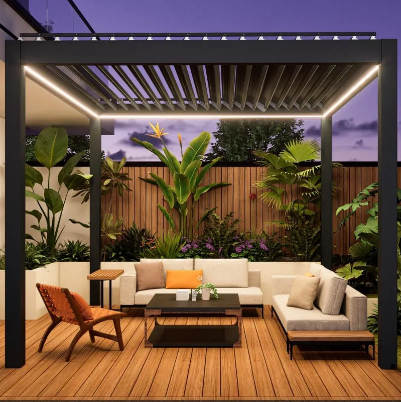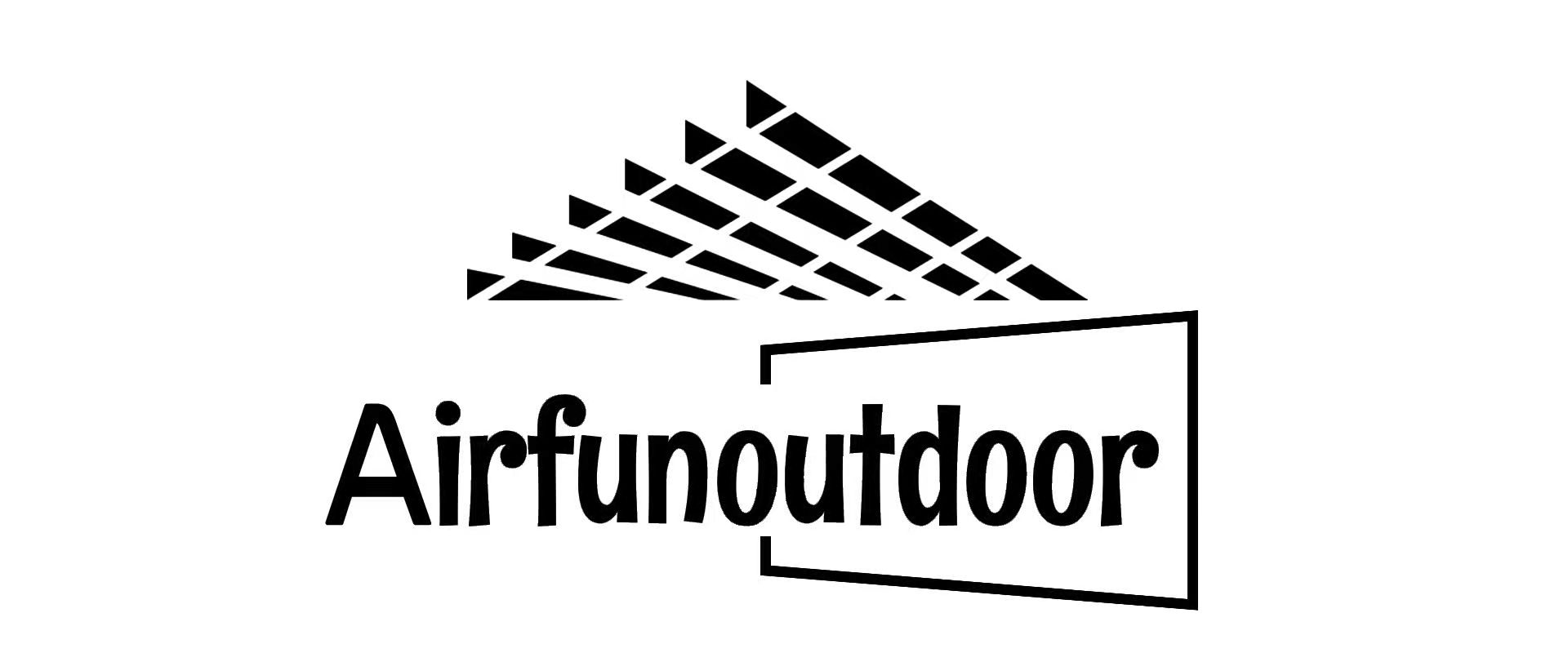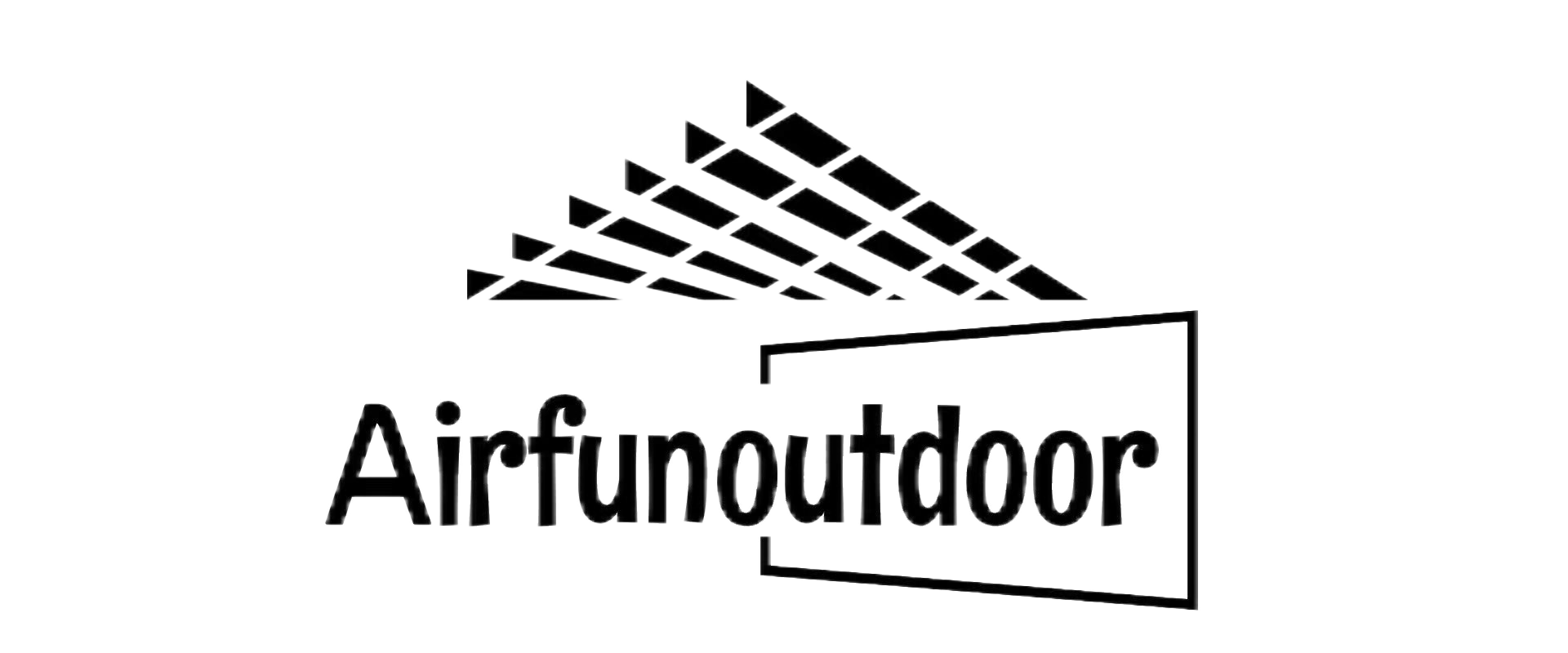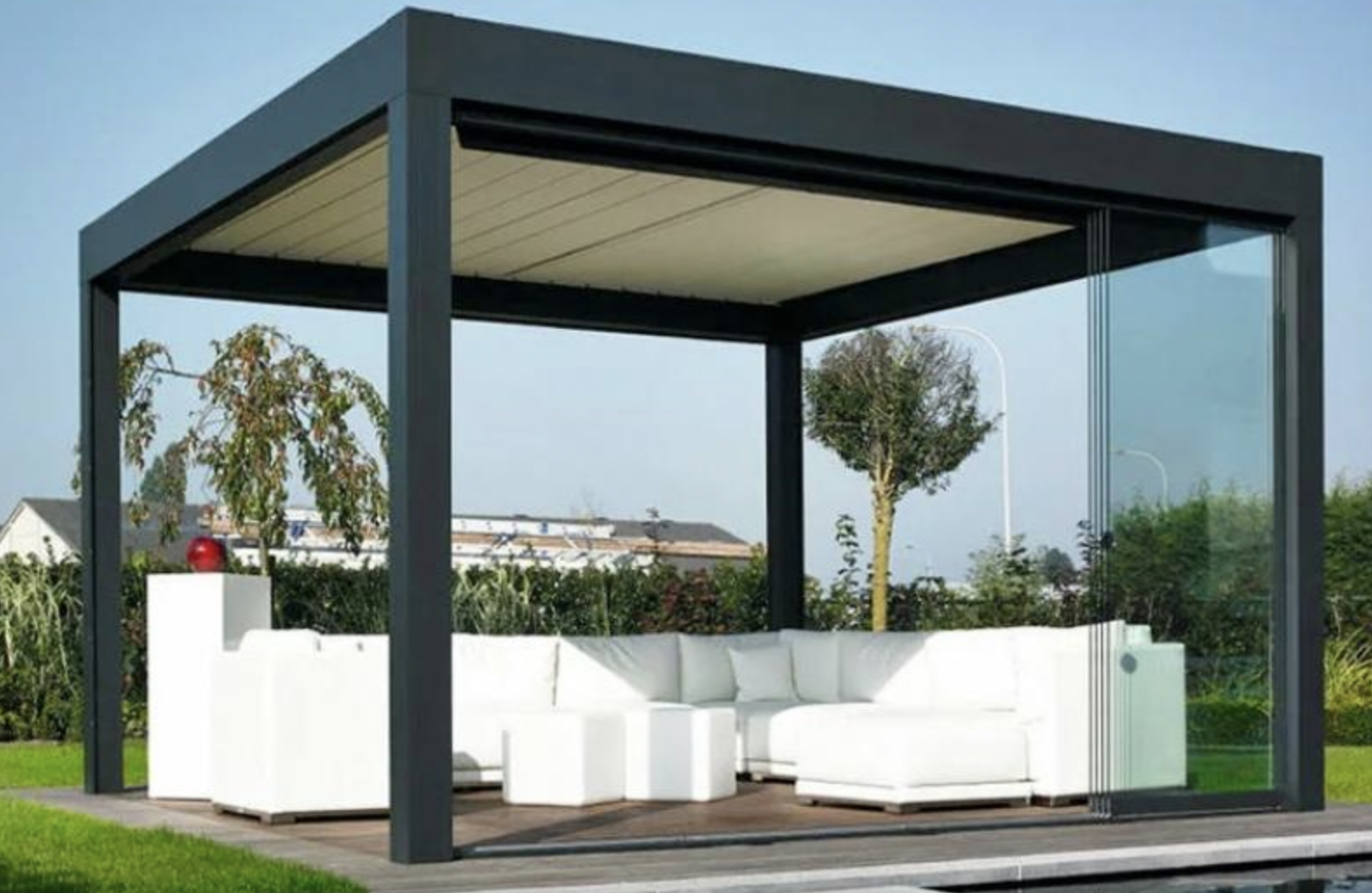Defining the Modern Freestanding Pergola
From Ancient Shade Structures to Contemporary Design
People love putting freestanding pergolas in their yards these days, but they've come a long way since those basic shade structures ancient Egyptians and Greeks built thousands of years ago. Modern versions manage to look good while actually working well too something older models just couldn't pull off. Take the old wooden beam lattices for example they're now replaced by shiny aluminum frames with adjustable slats that let sunlight filter through exactly how we want it, plus many come with built-in lights for evening parties. Different cultures have shaped this trend over time too. The fancy arched pergolas from the Italian Renaissance period still show up in contemporary designs around the world, though most homeowners probably don't realize where the inspiration came from.
Key Differences from Attached Pergolas and Gazebos
Freestanding pergolas are different from those attached to houses or gazebos because they don't need any building support to stay upright. What makes these structures so popular? Well, they can basically go anywhere in an outdoor space without needing special foundation work. Market research shows that more people are choosing freestanding options these days. They offer real freedom in design placement while still looking great in gardens and patios. Gardeners love how easy it is to move around plants and furniture when there's no wall or structure getting in the way.
The Anatomy of Freestanding Structures: Posts, Beams, and Rafters
What makes a freestanding pergola stand out starts with its basic building blocks posts, beams, rafters. Most are made from stuff that lasts long time without much fuss aluminum frames or cedar wood for instance. The strength matters a lot because if something wobbles or collapses after installation nobody wants that mess. That's why picking good quality materials isn't just nice to have it's absolutely necessary. Some folks go for special shapes too curved tops or fancy looking ends on those horizontal pieces. These design choices do more than look pretty they actually help distribute weight better across the structure while giving the whole thing some personality beyond just being functional outdoor space.
Creating Intentional Outdoor Living Spaces
Framing Sky Views While Filtering Harsh Sunlight
Freestanding pergolas transform outdoor living spaces into beautiful spots that also protect against direct sun exposure. Getting those perfect glimpses of blue sky without being blasted by sunlight requires some thoughtful planning though. The way we position and orient these structures makes all the difference for how much sun comes through. Think about where people actually hang out most when designing them. Materials matter too - adjustable wooden slats or retractable fabric covers let homeowners control exactly where shade falls across seating areas. Aluminum frames last forever in our climate, while vinyl options won't rot over time. Research shows something interesting here: patios with good shade coverage see way more activity throughout summer months compared to unshaded counterparts. Makes sense really, who wants to sit outside baking under hot sun when there's no relief?
Multi-Functional Zones: Dining, Lounging, and Cooking Areas
Freestanding pergolas really stand out when it comes to shaping different areas outdoors. These structures become go-to spots for all sorts of activities from enjoying meals al fresco to relaxing with friends or even setting up a small grill station. What makes them so great is their open layout that lets people move freely around without feeling confined. When designing outdoor spaces, think about practical choices like selecting durable materials for seating and maybe adding subtle changes in floor textures or heights to mark separate sections. Nowadays, people want their backyards to handle multiple purposes at once. That's why we see so many homeowners turning to pergolas not just as decorative additions but actual extensions of their homes where they can cook, entertain guests, or simply unwind after work.
Enhancing Entertaining With Integrated Lighting & Heating
Adding some lighting and heat to freestanding pergolas makes them usable way beyond just summer nights. People love hanging out there in the evenings when they're properly lit up. String lights work great for atmosphere while proper outdoor lamps help everyone see where they're going without tripping over something. For colder weather, most folks find portable heaters really handy. They throw off enough warmth so guests stay comfortable even when temperatures drop after sunset. We've seen how these heated spaces get used much more often than those without any kind of heating solution installed. The difference between hosting events sporadically versus regularly comes down to whether or not people actually want to be outside regardless of what month it is.
Design Flexibility for Personalized Expression
Material Choices: Wood vs. Aluminum vs. Composite
Choosing materials for a freestanding pergola involves considering several key factors, especially when comparing wood, aluminum, and composite alternatives. Wood brings a certain charm and warmth to any backyard space, but comes with the downside of needing constant care to avoid rotting or attracting pests. Aluminum stands out because it's light on the wallet and won't rust away over time, plus it takes practically no effort to keep looking good, although many find it lacks the tactile qualities that wood provides. Composites strike a nice middle ground, offering lasting durability while cutting down significantly on maintenance headaches. Green building practices are becoming increasingly popular these days too, particularly among those concerned about their environmental impact. According to recent research from the National Association of Home Builders, around one in five homeowners now puts sustainability at the top of their list when making construction choices. Ultimately what works best depends largely on how long someone wants their pergola to last and what kind of aesthetic they're going for outdoors.

Customizable Roof Options: Solid, Louvered, or Green Canopy
The type of roof chosen for a freestanding pergola really affects how it works and looks. Solid roofs give full protection from rain and sun, though they block out natural light and obstruct views of the sky. Then there are louvered roofs with those adjustable slats that let people control how much light comes through. Many designers love these because they work well in different weather and look pretty modern. Some folks go for green canopies covered in plants instead. These bring nature right into the space while still letting some sunlight filter through. Landscape architects often suggest this option since it's both practical and good for the environment. With so many choices available, homeowners can find something that fits their needs without sacrificing style or comfort.
Adding Personality: Swings, Planter Boxes & Decorative Screens
Adding swings, planters, and decorative screens to a freestanding pergola makes it look better and works better too. These little touches do more than just make the space unique they really bring personality to the area and show off what someone likes. Swings are great for lounging around and can even give kids somewhere fun to play. Planters filled with flowers or herbs add pops of color and life, fitting right into whatever kind of garden vibe someone wants. Screens help block prying eyes from neighbors while still letting light through, making the whole area feel private yet stylish. Many people who have done this find that these additions tie everything together nicely, so their pergola becomes part of the overall backyard design instead of standing out awkwardly. The result? A place where everyone actually wants to spend time outside.
Architectural Impact on Property Value
Curb Appeal Enhancement Through Framed Vistas
Adding a freestanding pergola to a yard really boosts curb appeal by framing nice views and drawing attention to attractive parts of the landscape. When placed thoughtfully, these structures highlight the natural beauty around them, making certain areas stand out and catch the eye of anyone passing by. Beyond looks, they actually affect how valuable people perceive a property to be. Research shows homes with good landscape design often sell for about 20% more than those without proper outdoor features. Pergolas along with other garden structures play a big role in real estate assessments because they create inviting spaces that simply look better maintained and cared for.
Creating Perceived Square Footage Expansion
Freestanding pergolas make backyards feel bigger than they actually are because they create separate outdoor zones that flow right into the house itself. People find these structures psychologically beneficial since they offer nice spots to unwind or host friends, something that definitely makes houses more attractive when put up for sale. Real estate professionals point out that including these kinds of outdoor additions gives properties an appearance of being more roomy, which is one of those key things most buyers look at when checking out homes. The way these pergolas trick the eye into thinking there's extra space affects both appraisal values and final selling prices, showing just how much importance modern homebuyers give to having good outdoor living options available.
ROI Comparison with Other Outdoor Improvements
Looking at the ROI for freestanding pergolas means checking how they stack up against other backyard upgrades when it comes to money spent versus what we get back. These pergolas tend to keep their value pretty well because they give homeowners something stylish and useful outside without tearing apart existing structures or spending tons on construction work. Some numbers show that good landscaping investments can actually bring back more than what was initially paid out sometimes even double the original amount which beats things like installing pools hands down. Home buyers love these kinds of features too. Real estate folks have noticed that properties with nice outdoor areas attract attention faster. Pergolas specifically stand out since they're flexible enough for different styles while still boosting curb appeal significantly. That kind of visual upgrade makes sense financially as well as aesthetically speaking.
Weather-Resistant Materials for Lasting Performance
Powder-Coated Aluminum vs. Thermally-Modified Wood
Durability matters a lot when picking out materials for those outdoor structures we all love, especially freestanding pergolas that stand alone in gardens and backyards. Two main options people go for are powder coated aluminum and thermally modified wood, both with their own strengths. The aluminum stuff just doesn't rust or corrode easily, which makes it great for places where there's lots of humidity or regular rain showers. Maintenance? Pretty much just a quick wipe down once in a while to keep looking good as new. On the flip side, thermally modified wood goes through some serious heat treatment that makes it tough enough to handle being outdoors without falling apart. Works best in drier areas actually, and gives that nice natural look most folks want around their homes. Most pros will tell anyone building something outside to think about where they live and how much time they want to spend maintaining it. Take coastal areas for example, aluminum tends to be better there because salt air eats away at other metals so fast. But if someone wants something that blends into nature, the thermally treated wood has this warm feel that just fits right in with trees and plants nearby.
Maintenance-Free Composite Beams & Posts
Using composite materials that don't need maintenance for beams and posts when building freestanding pergolas really cuts down on the hassle of keeping things looking good over time. Unlike regular wood, these composites won't warp, crack, or split after years of sun exposure and weather changes. Plus, nobody has to worry about repainting or resealing every few years, so the wallet stays fuller in the long run. From an environmental standpoint, these materials actually help reduce waste because they last much longer than traditional options, plus many contain recycled content during manufacturing. Industry data shows that composite beams typically stick around for at least 25 years with minimal fuss, which makes sense why more homeowners are choosing this route when they want something both affordable and green for their backyard spaces.
UV-Resistant Fabrics for Retractable Canopies
Adding UV resistant fabric to retractable canopies makes all the difference when it comes to protecting against sun damage and making sure those outdoor pieces last longer. These special fabrics really do stop most of those dangerous UV rays from getting through, which means less risk of skin problems down the road and keeps whatever's underneath from fading away so fast. Good quality UV resistant materials actually make the whole canopy tougher too, so it doesn't break down after sitting out in the sun for months on end. We know from research by the Skin Cancer Foundation that constant UV exposure builds up over years and can cause serious health problems including different types of skin cancer. That's why going with these protective fabrics matters so much they cut down on those risks pretty dramatically. People get to enjoy their backyard or patio areas safely without worrying about damage to either themselves or their expensive outdoor furniture and structures.
Strategic Landscape Integration Techniques
Positioning for Solar Orientation and Wind Protection
Getting the placement right for a freestanding pergola matters a lot when it comes to making good use of the space. When positioned properly facing south (in northern hemisphere) and shielded from harsh winds, these structures get the most out of natural light patterns. During winter, they collect plenty of sun warmth, whereas in summer they cast welcome shadows across seating areas. The result? A space that feels comfortable without needing extra heating or cooling systems. Adding features like movable slats on the roof or screens around the sides makes all the difference in keeping the pergola useful through every season. Look at any backyard with a well situated pergola and notice how it becomes the heart of outdoor living, blending seamlessly into the surrounding landscape rather than standing out awkwardly.
Connecting to Existing Patios & Garden Pathways
Getting a new freestanding pergola to work well with existing patios and garden paths makes all the difference in creating a cohesive outdoor space. Good planning starts with looking at how people actually move through different areas to make sure everything flows better and feels more accessible. When connections are thought out properly, folks can enjoy their time outside without feeling stuck in one spot, which really improves the whole vibe of the yard. Take those pergolas we see attached to meandering garden trails or patios that open right up to comfy seating spots. These setups show just how much better things look and function when different parts of the landscape connect naturally. At the end of the day, proper integration means moving from one part of the backyard to another feels effortless rather than forced.
Complementary Plantings: Vining Flora & Accent Lighting
Adding climbing plants next to a standalone pergola makes it look better while actually working harder for us too. Vines like wisteria or trumpet vine help mask the metal framework and give extra shade during hot afternoons. Throw in some nice lighting and suddenly this area becomes somewhere people want to hang out at night. Most folks go for LED strips along the beams or those little solar garden lights tucked between the leaves. They really change how the whole space feels when darkness falls. Spring brings bursts of color from flowering climbers, which cool things down naturally as well. Summer sees them thickening up, creating their own microclimate beneath. All these touches show why planning what goes where matters so much for pergola spaces.
Year-Round Functionality Through Smart Features
Motorized Louvers for Climate Control
Freestanding pergolas get a whole lot better when equipped with motorized louvers. These nifty additions let folks tweak how much air moves through and adjust sunlight levels pretty accurately, which means the space stays comfortable no matter what time of year it is. Most models work well with existing pergola structures too since they're designed to fit without too much hassle during installation. People who have them installed often mention how much easier it becomes to enjoy their outdoor areas regardless of sudden weather changes. The whole setup basically turns a regular patio into something that feels like an actual living room outside while still maintaining that upscale feel many homeowners want for their backyard spaces.
Built-In Rain Sensors & Automated Drainage
Putting rain sensors on those standalone pergolas really makes sense if we want to keep our outdoor spaces safe. When it starts drizzling, these little gadgets will shut down the louvers before anyone even notices the clouds rolling in. No more getting caught off guard when sudden showers ruin what was supposed to be a relaxing afternoon outside. And let's not forget about those drainage systems that work behind the scenes too. They do an amazing job directing water where it needs to go, so puddles don't form and nobody has to worry about soggy floors after a storm. People who've installed these systems report fewer problems with dampness damaging their furniture and flooring over time. The real bonus? Just knowing that whatever happens with Mother Nature, our backyard remains protected from unexpected surprises.
Winterization Tips for Snow Load Regions
Winterizing freestanding pergolas becomes really important when living somewhere that gets hammered by snow every winter. Homeowners should look into a few different approaches to keep their pergola standing tall through the cold months. Reinforcing those support posts makes sense, especially if they're made of wood rather than metal. Also worth considering is setting up proper drainage around the base area so water doesn't pool and cause rot issues over time. Most contractors will tell anyone who asks that checking things over at least once a season is pretty much standard practice. A quick visual inspection before December hits can spot problems early on. When folks stick to recognized building guidelines for pergola construction, they generally end up with something that lasts decade after decade. That means getting out there with family and friends even when it's freezing outside, which beats replacing the whole thing every few years because it collapsed under ice buildup.
FAQ
What distinguishes a freestanding pergola from other outdoor structures?
A freestanding pergola is an independent structure that does not rely on existing buildings for support, unlike attached pergolas and gazebos. It offers flexibility in positioning and adds aesthetic appeal to outdoor areas.
Which materials are ideal for building a freestanding pergola?
Popular materials for freestanding pergolas include wood, aluminum, and composite. Each has its own advantages, with wood offering natural beauty, aluminum being lightweight and rust-resistant, and composite providing durability with minimal upkeep.
How can freestanding pergolas enhance property value?
Freestanding pergolas enhance curb appeal by framing vistas and expanding perceived living spaces outdoors, which contributes to increased property values. They also offer high ROI compared to other outdoor enhancements.
What are the best weather-resistant materials for pergolas?
Powder-coated aluminum and thermally-modified wood are excellent choices for weather resistance. Aluminum is good for humid climates due to its rust resistance, while thermally-modified wood suits drier climates.
Can freestanding pergolas be customized for year-round use?
Yes, features like motorized louvers, rain sensors, and automated drainage systems allow freestanding pergolas to adapt to seasonal changes, providing comfortable outdoor spaces throughout the year.
Table of Contents
- Defining the Modern Freestanding Pergola
- Creating Intentional Outdoor Living Spaces
- Design Flexibility for Personalized Expression
- Architectural Impact on Property Value
- Weather-Resistant Materials for Lasting Performance
- Strategic Landscape Integration Techniques
- Year-Round Functionality Through Smart Features
-
FAQ
- What distinguishes a freestanding pergola from other outdoor structures?
- Which materials are ideal for building a freestanding pergola?
- How can freestanding pergolas enhance property value?
- What are the best weather-resistant materials for pergolas?
- Can freestanding pergolas be customized for year-round use?



